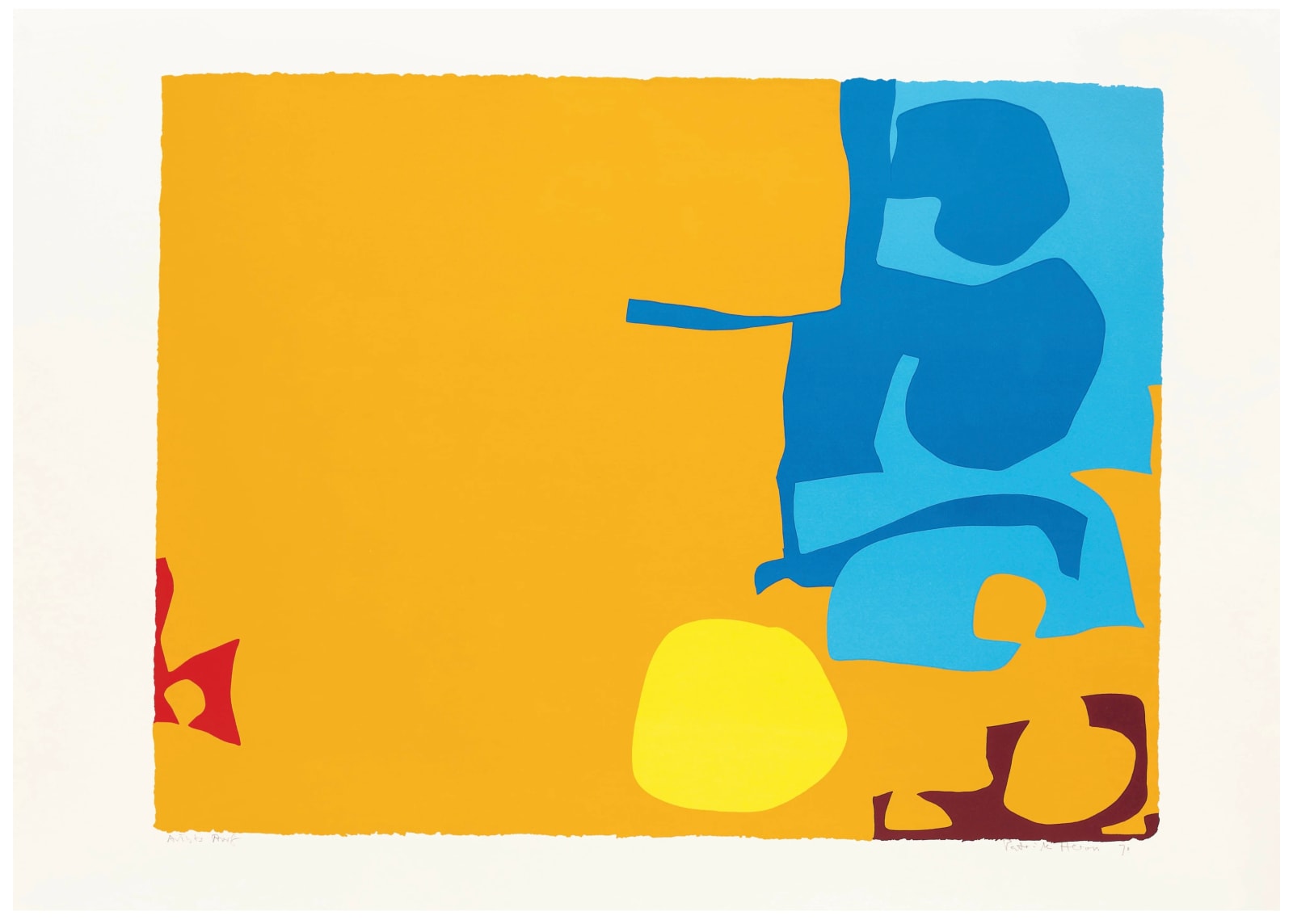Patrick Heron U.K., 1920-1999
Blues Dovetailed in Yellow : April 1970, 1970
Screenprint on smooth wove paper, framed
Signed by the artist in pencil, lower right on recto
Signed by the artist in pencil, lower right on recto
71.1 x 101.6 cm
© The Estate of Patrick Heron
'Blues Dovetailed in Yellow' emerged during a period when Heron fully developed his distinctive visual language of interlinking forms and explored the balance between colour and space. The print demonstrates...
'Blues Dovetailed in Yellow' emerged during a period when Heron fully developed his distinctive visual language of interlinking forms and explored the balance between colour and space. The print demonstrates his sophisticated understanding of colour relationships, with blues and yellows creating dynamic visual tension through their complementary interaction.
This work is particularly significant within Heron's oeuvre, representing his successful translation of painterly concerns into the print medium. It showcases what Stuart Preston noted as Heron's ability to balance "specific, squarish shapes in compositions of momentary equilibrium." The interplay between forms creates what Preston described as a "state of suspended animation" that gives the work its extraordinary lightness despite the positive existence of its forms.
The historical context is crucial. Created in 1970, the work emerged when St. Ives had become a world centre for modernist innovation. While American Abstract Expressionism dominated the international art scene, Heron actively engaged with and challenged this influence, creating a distinctly British response to abstraction. His position as an artist and critic allowed him to engage with these developments on multiple levels, contributing to transatlantic artistic dialogue.
The print embodies Heron's theoretical position that colour and form are inseparable elements in artistic expression. It demonstrates his commitment to the "reality of the eye," where every part of the composition is equally important. This approach challenged traditional compositional hierarchies and helped establish abstract painting as a significant force in British art during the post-war period.
This work is particularly significant within Heron's oeuvre, representing his successful translation of painterly concerns into the print medium. It showcases what Stuart Preston noted as Heron's ability to balance "specific, squarish shapes in compositions of momentary equilibrium." The interplay between forms creates what Preston described as a "state of suspended animation" that gives the work its extraordinary lightness despite the positive existence of its forms.
The historical context is crucial. Created in 1970, the work emerged when St. Ives had become a world centre for modernist innovation. While American Abstract Expressionism dominated the international art scene, Heron actively engaged with and challenged this influence, creating a distinctly British response to abstraction. His position as an artist and critic allowed him to engage with these developments on multiple levels, contributing to transatlantic artistic dialogue.
The print embodies Heron's theoretical position that colour and form are inseparable elements in artistic expression. It demonstrates his commitment to the "reality of the eye," where every part of the composition is equally important. This approach challenged traditional compositional hierarchies and helped establish abstract painting as a significant force in British art during the post-war period.
